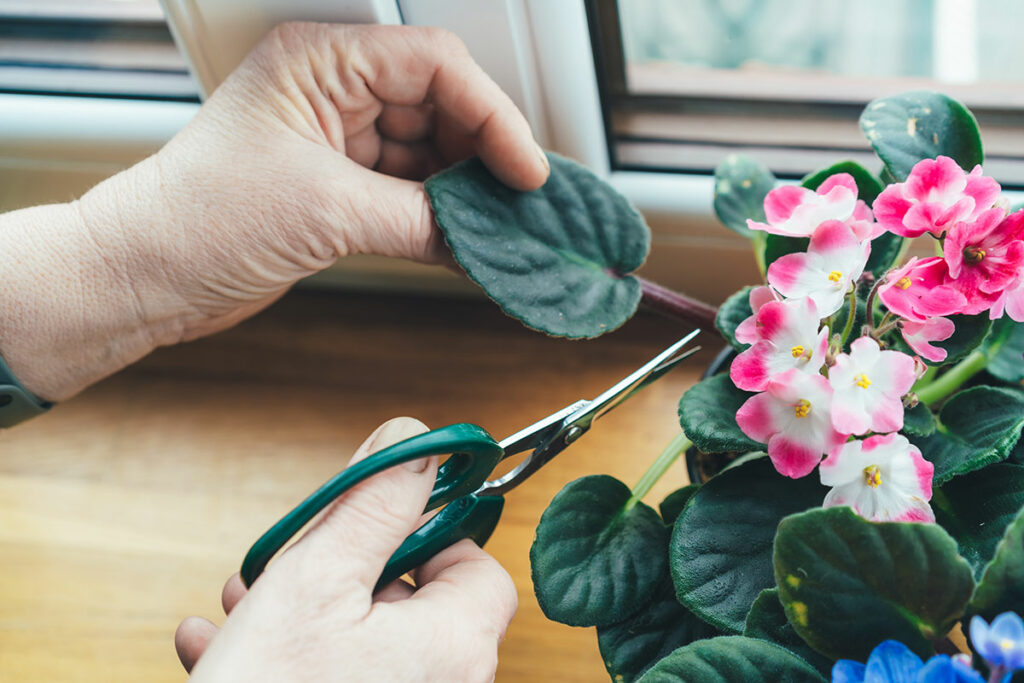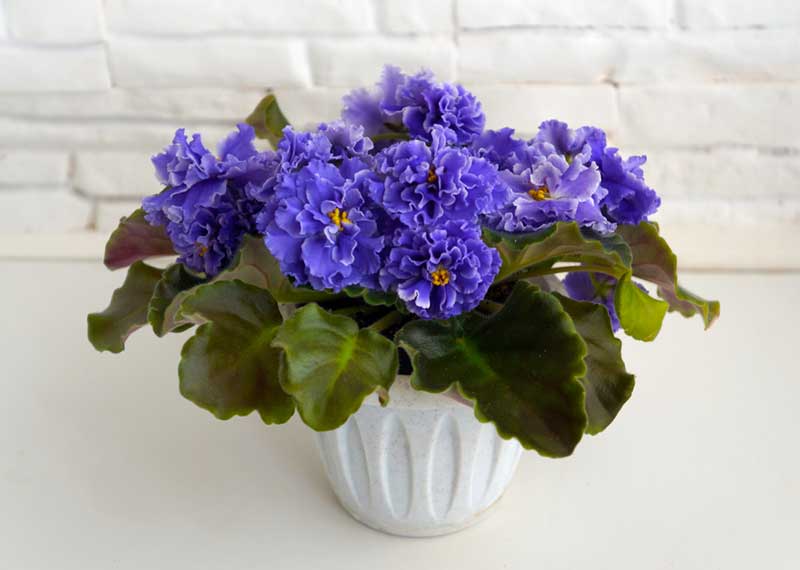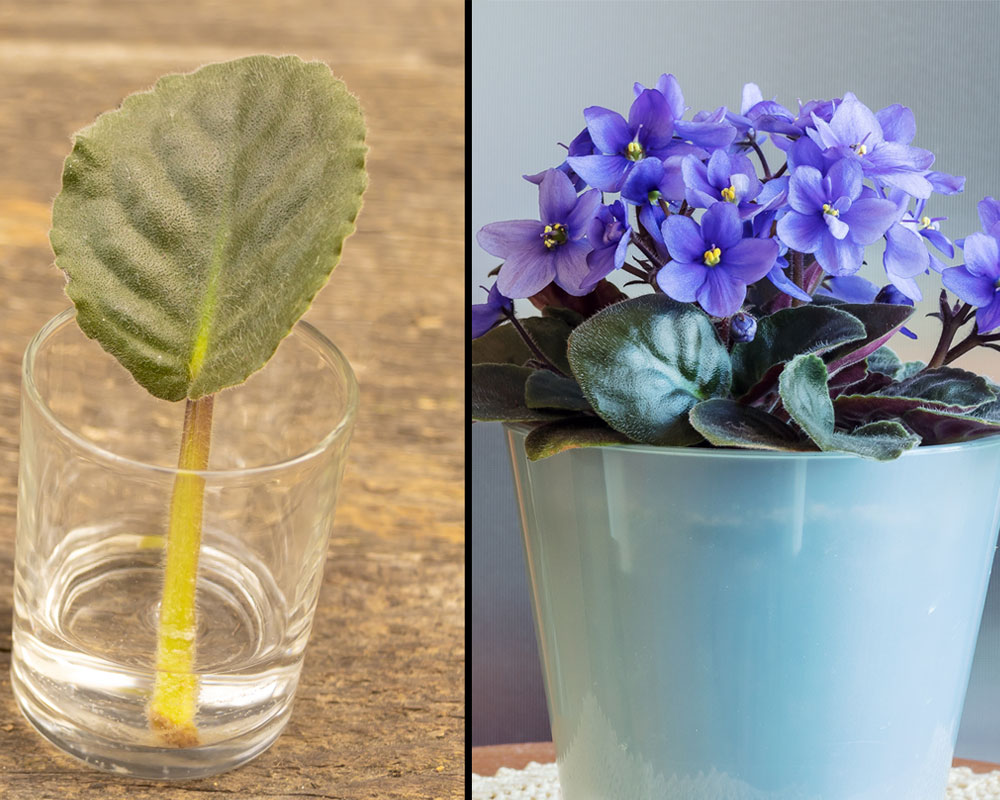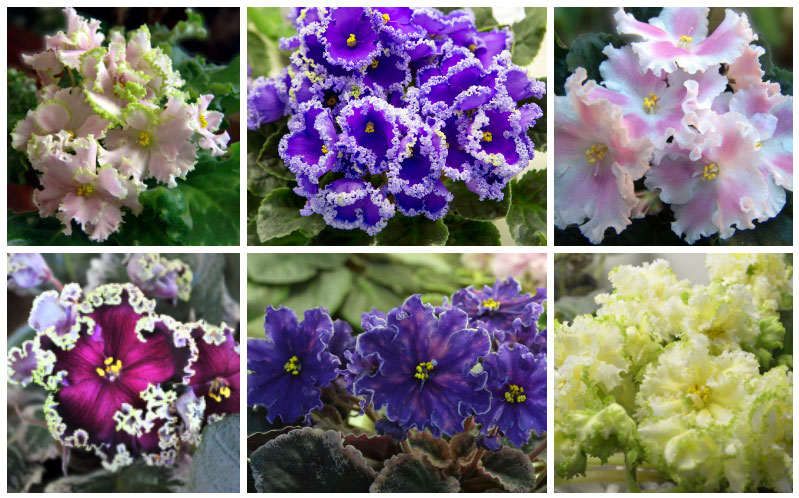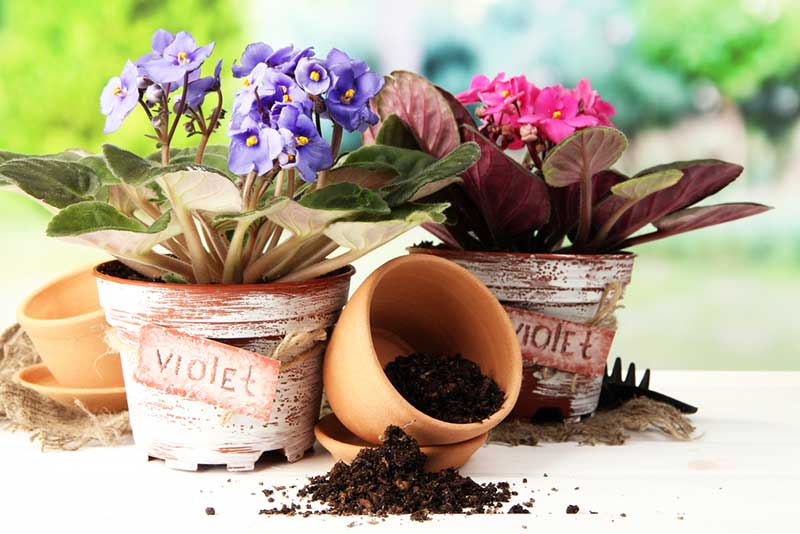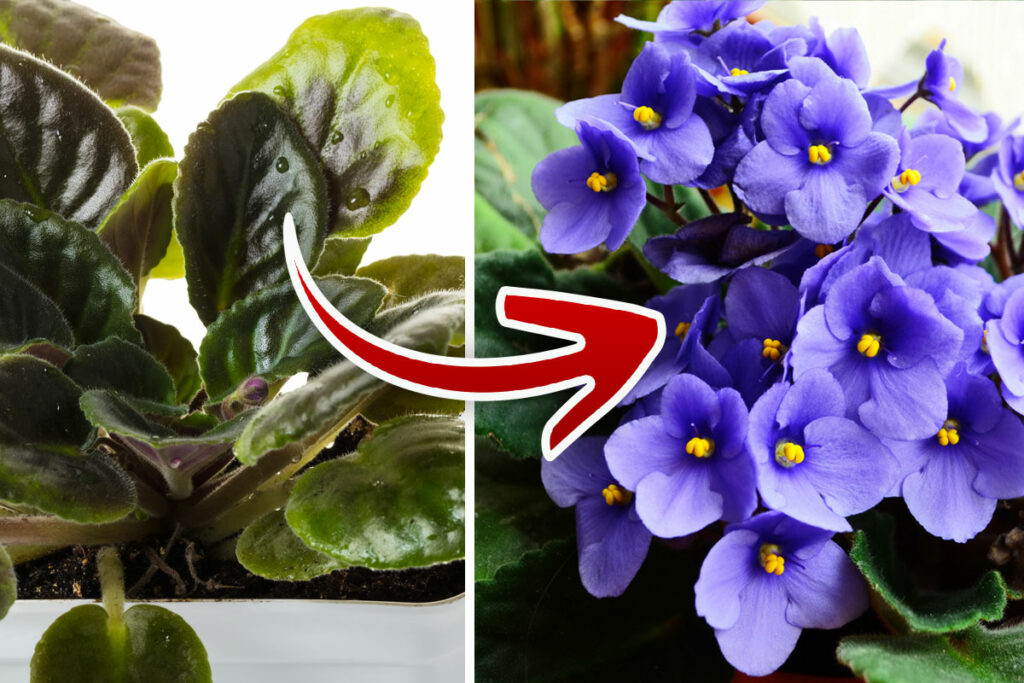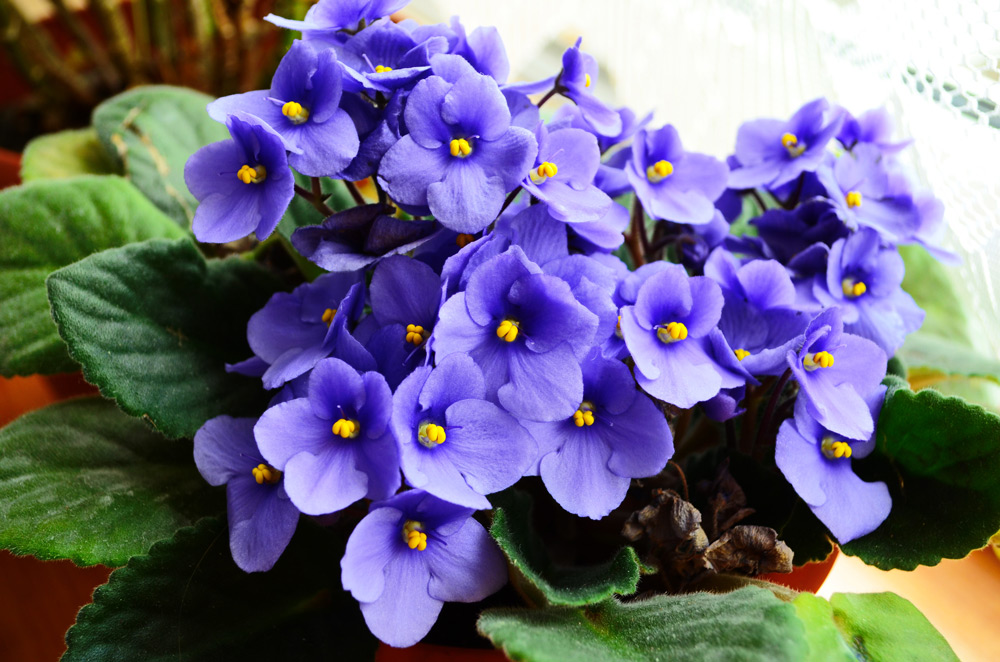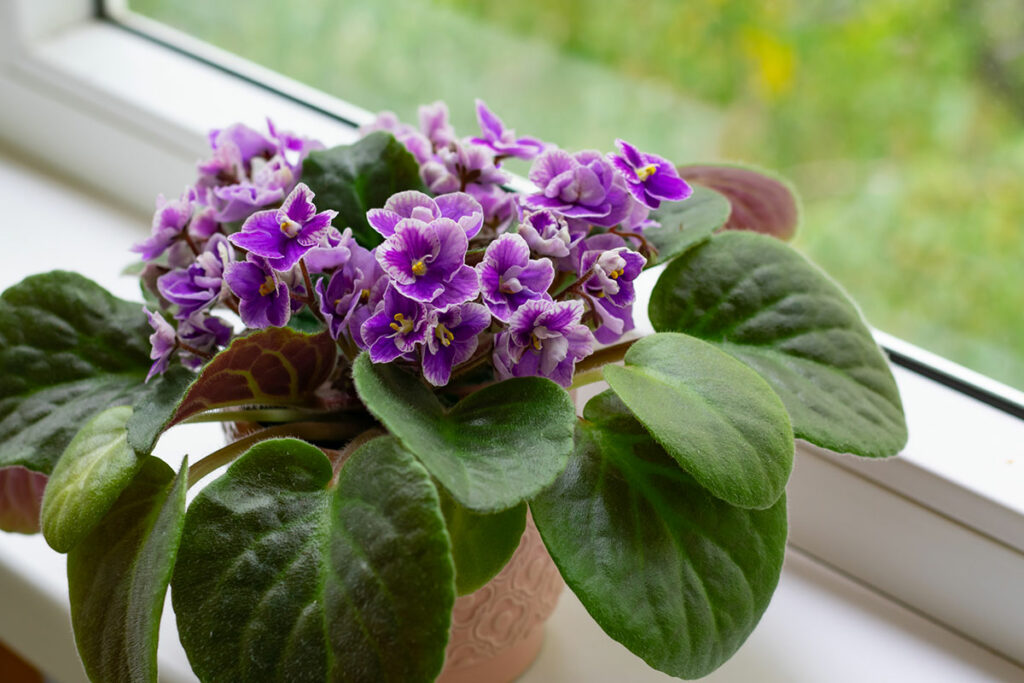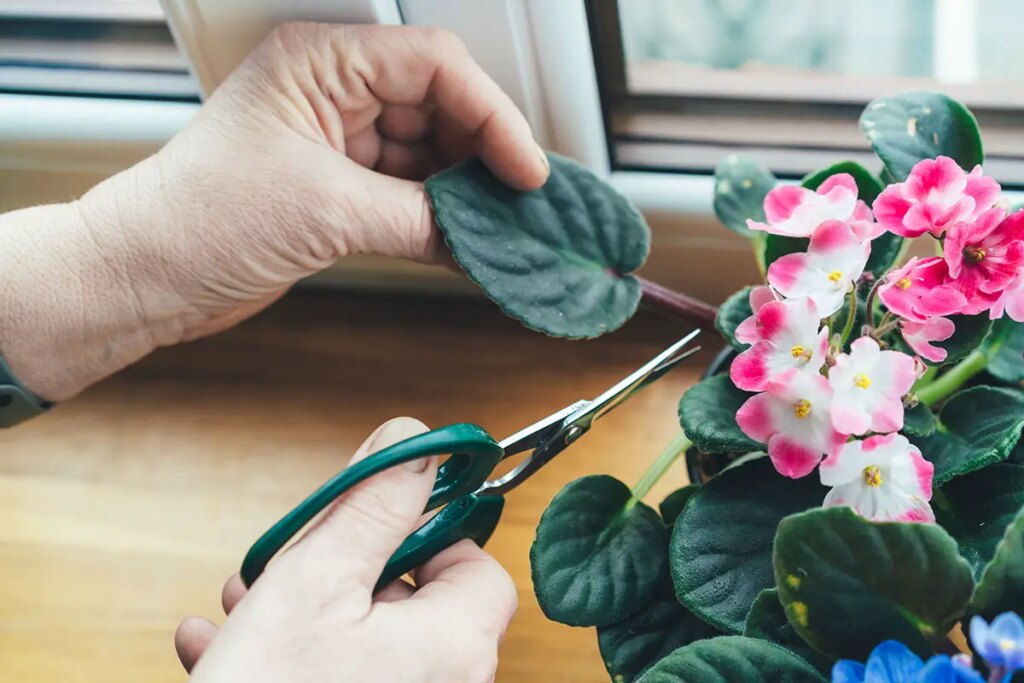
Are you wondering why your African Violets aren’t blooming as much as you’d like? The secret may lie in the art of pruning.
Pruning isn’t just about shaping your plant, it’s a key factor in encouraging new, vibrant blooms.
Knowing when and how to prune your African Violets can make a world of difference. It’s not about sticking to a strict calendar schedule but rather understanding the cues your plant gives you.
And remember, it’s not just about snipping away – the tools you use and how much you prune can significantly impact your plant’s health and flowering potential.
The Benefits of Pruning African Violets
If you’re an African Violet owner, you ought to consider the advantages of properly pruning your potted jewels. Although they may not require pruning to stay alive, your African Violets can enjoy some visible perks when given a nature-inspired ‘haircut’.
Here, let’s discuss the benefits of pruning, which include encouraging vigorous blooms, controlling plant shape, and preventing disease spread.
Encouraging Blooms and New Growth
It’s no myth that pruning can significantly boost the flowering and leaf productivity of an African Violet. As they say, more leaves, more life. When I trim back stagnant leaves, I’ve noticed that it coaxes the plant to produce fresh and vibrant foliage. It’s like a green signal encouraging it to keep growing and enhances the overall health and aesthetics of the plant.
Moreover, lopping off spent flowers can make way for fresh ones to blossom. Pruning stimulates the plant to bloom as it frees up the energy the plant uses for maintaining the old flowers.
It’s like pressing the plant’s ‘bloom’ button, working wonders for its performance!
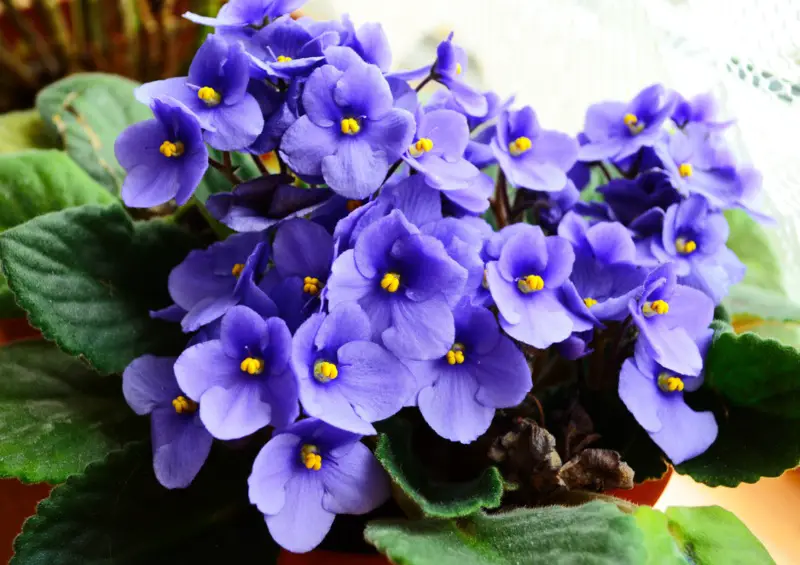
Controlling Plant Shape and Size
Pruning gives me control over the shape and contour of my African Violets. I shape them the way I want so that they fit perfectly in my indoor garden landscape. Each snip is strategically planned to enhance the plant structure and maintain a balanced leaf-to-flower ratio. Remember, you’re the artist, and the violets are your clay. Craft them wisely!
Eliminating Disease and Damage
Pruning isn’t just about beautification and growth. It’s a powerful tool to combat pests and diseases that could potentially be fatal to your African Violets.
By promptly snipping off affected parts, I can halt the spread of disease in its tracks and save my plant from an untimely demise. Imagine nipping a problem in the bud; that’s exactly what pruning does. It’s a shield that protects your African Violets from unwanted visitors and ailments.
In a nutshell, the benefits of pruning African Violets go beyond cosmetic changes. It’s a practice that amplifies bloom frequency, fosters new growth, aids in size management, and safeguards against diseases.
No matter how low-maintenance your African Violets are thought to be, a little pruning can make a world of difference. So, roll up your sleeves, grab those pruners, and brace your African Violets for a much-needed trim.
Identifying the Right Time to Prune
Knowing when to prune your African Violet is crucial for its health and vitality. There’s an optimal time for pruning African Violets, and certain signs indicate when your plant needs a good trim.
Optimal Seasons for Pruning
The key to successful pruning lies in the timing. Aim to prune African Violets in their active growth phase, typically spring and summer. During these months, the plants are more resilient, making them better equipped to handle the stress of pruning and bounce back more vigorously.
Bear in mind, African Violets bloom year-round, in cycles. Avoid pruning your plants during their blooming period since it is a critical time where they are expending energy in flower production.
Signs Your African Violet Needs Pruning
Apart from using a seasonal approach, you should also be observant and look for distinct signs indicating that it may be time to reach for the pruning shears.
First and foremost, look out for any signs of dead or damaged leaves. A sickly brown or yellowing leaf detracts the plant’s energy and should be removed promptly.
Secondly, if your plant’s foliage appears overcrowded, it might need some pruning. Crowded leaves can block out light and hinder the plant’s growth.
Lastly, if your African Violet begins getting leggy and producing fewer blooms, then you’ve got a sure sign, it’s pruning time.
Overall, pruning your African Violet is a proactive routine, essential for the plant’s health, beauty, and longevity, and knowing the right time to prune is a big part of this essential plant care task.
Pruning Techniques for More Blooms
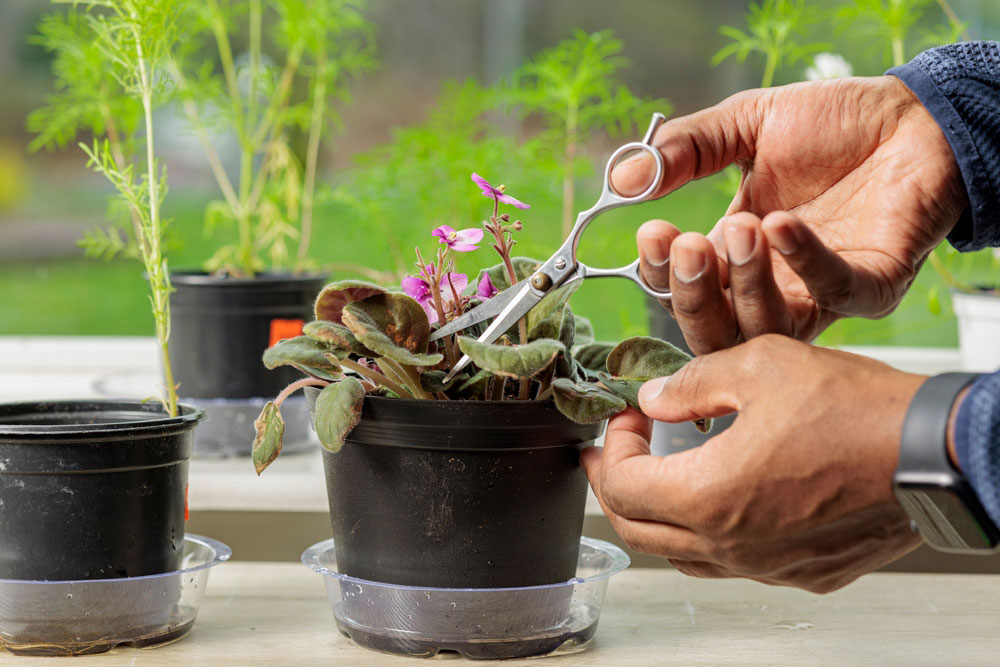
In this section, we’ll delve into some specific techniques to prune your African Violets for maximum bloom production. This includes a step-by-step trimming guide, knowing which areas to prune, and balancing the plant’s shape with its flowering potential.
Step-by-Step Guide to Pruning
My first piece of advice is to be careful while pruning your African Violet. Even though pruning can be beneficial, improper trimming could harm the plant instead. Here’s a simple step-by-step guide you could follow:
- Start by removing any dead or faded flowers. These are not just unattractive, they suck energy from the plant and could hinder the growth of new blooms.
- Next, look out for dead or unhealthy-looking leaves and remove them gently. Leaves that show signs of disease or insect damage are best eliminated immediately to prevent the spread of the problem.
- Pay special attention to the bottom-most leaves. Often, these oldest leaves are the first to show signs of decay. Removing them helps the plant redirect its energies to creating fresh, strong leaves.
- Use a sharp, clean pair of pruning shears or scissors. This ensures a clean, smooth cut that heals quickly.
- After pruning, give your plant plenty of natural light, water, and nutrients to recover and put out new growth.
Targeting the Right Areas for Pruning
Targeting the right areas for pruning can make a big difference. While pruning African Violets, focus on the older leaves, especially ones at the base of the plant. These leaves, even if they’re healthy, compete with new leaves for light and nutrients.
Also, look out for “leggy” stems – these are elongated stems with sparse leaf growth. Cutting back these stems redistributes energy to other parts of the plant, promoting a fuller, more attractive appearance. Lastly, don’t forget to always prune spent flowers to incite new blooms.
Balancing Shape with Flower Production
The final challenge to pruning African Violets is achieving a balance between maintaining a pleasing plant shape and promoting the maximum amount of flowers. My personal strategy is to aim for a rounded, ‘domed’ shape that’s not only appealing but also encourages the plant to branch out.
Remember, every cut you make prompts the plant to initiate new growth in the area surrounding the cut, shaping the plant’s destiny. So, strategically trim your African Violet to encourage lush foliage and abundant blooms while maintaining its pleasing shape.
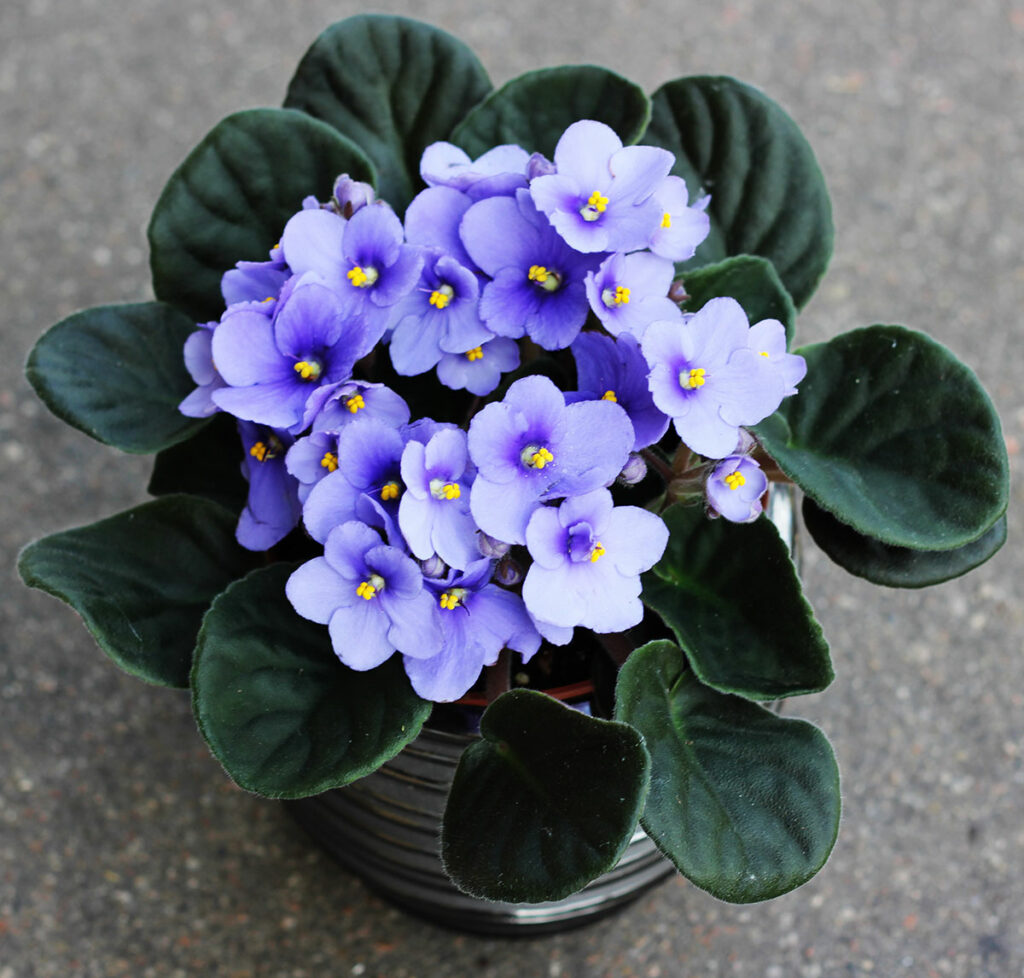
Post-Pruning Care for African Violets
Caring for your African Violet doesn’t end after a pruning session; quite the contrary. Post-pruning care plays an essential role in helping your plant recuperate and setting it up for a prosperous future. Let’s explore two essential subtopics under this umbrella: watering and adjusting light and fertilization.
Watering After Pruning
After a good pruning session, your African Violet might be a bit shocked, and it’s essential to help it bounce back. Resist the urge to saturate it with water immediately.
Instead, water sparingly at first. Keep an eye out for signs of new growth before you return to a regular watering schedule. Balance is key. Overwatering is a quick path to root rot. Aim to let the soil’s top layer dry out between waterings.
If you’re wondering how to water most effectively, remember that African Violets prefer to take their water from below. Place the pot in a filled saucer for about fifteen to thirty minutes, allowing it to drink up the needed moisture through the drain hole.
Adjusting Light and Fertilization
Just like with watering, moderation is key when it comes to light and fertilization. African Violets love bright, indirect light. Providing consistent light stimulates their growth and encourages blooming.
Ensure that your plant gets a good dose of light without subjecting it to dramatic light changes. In addition to light, it’s time to apply a nutrient boost once you see new growth after pruning.
Use a balanced, half-strength fertilizer to encourage flowering. However, remember too much of a good thing can be harmful, so always stick to recommended doses. You’ll begin to notice your African Violet blooming, adding charm and color to its surroundings. There’s no sight quite like a well-cared-for African Violet beaming with vibrant blossoms.





